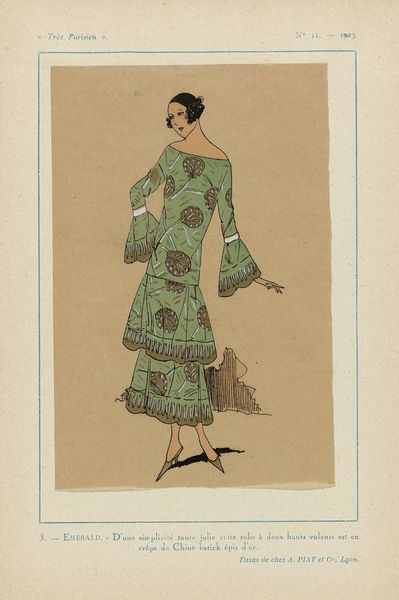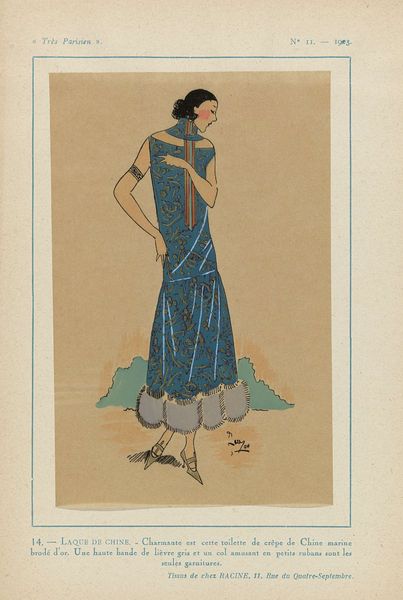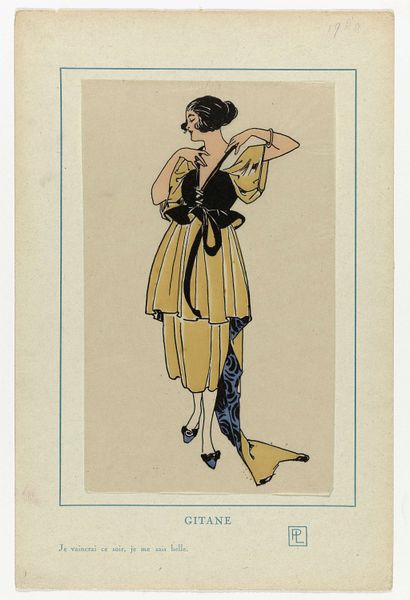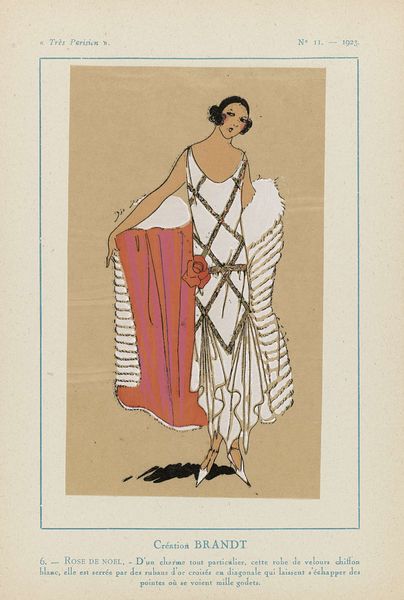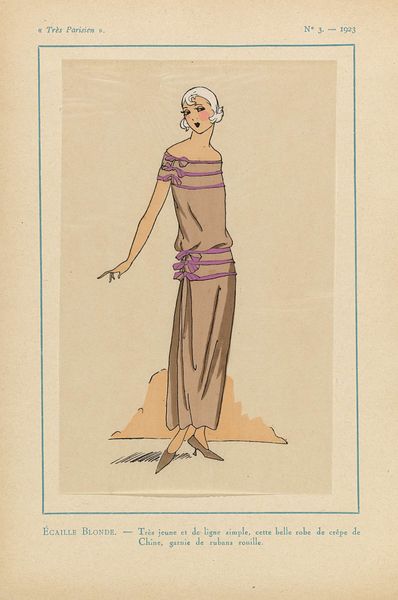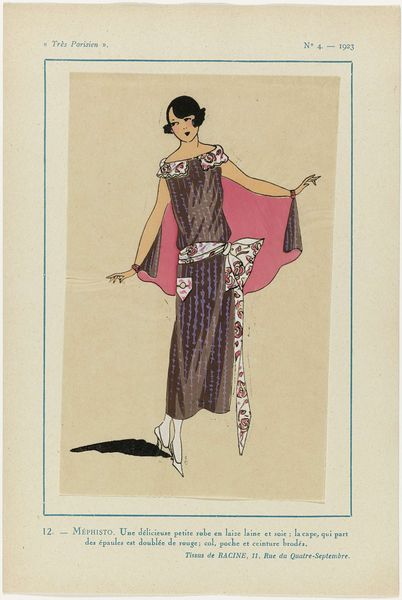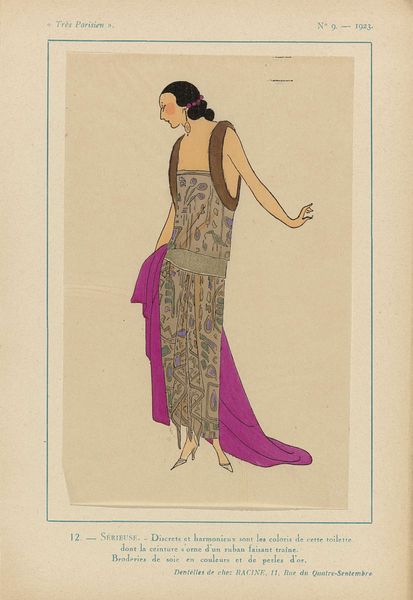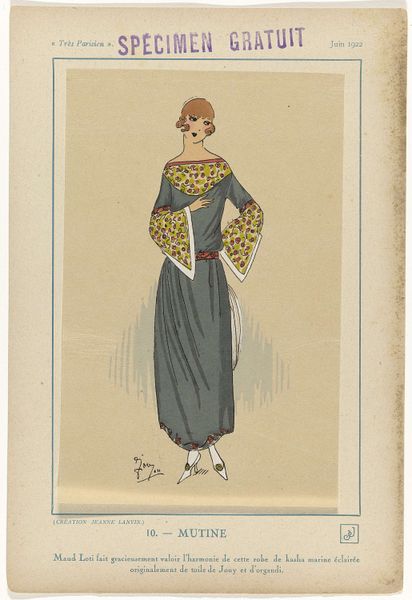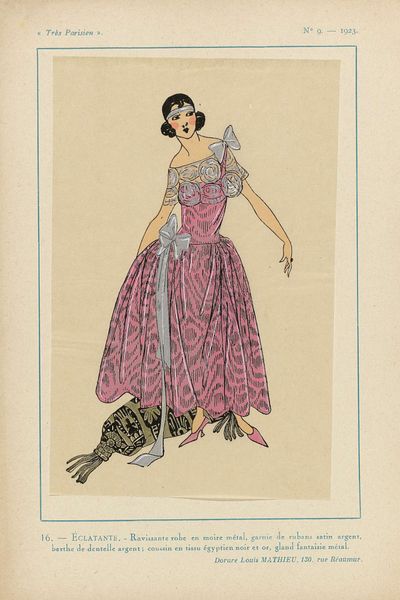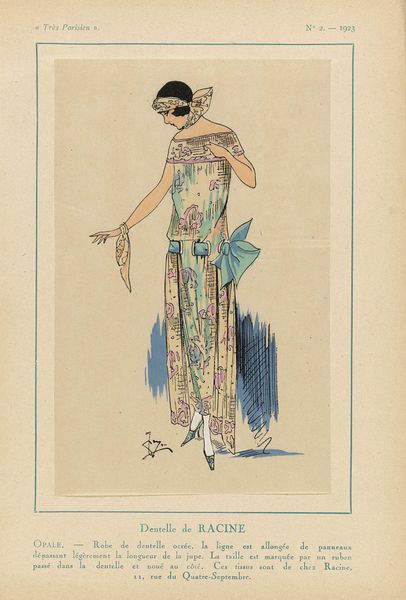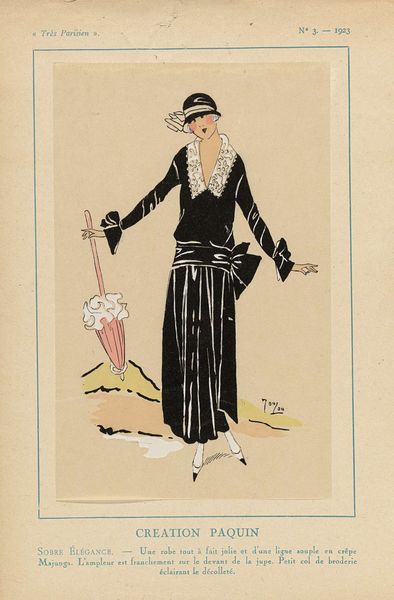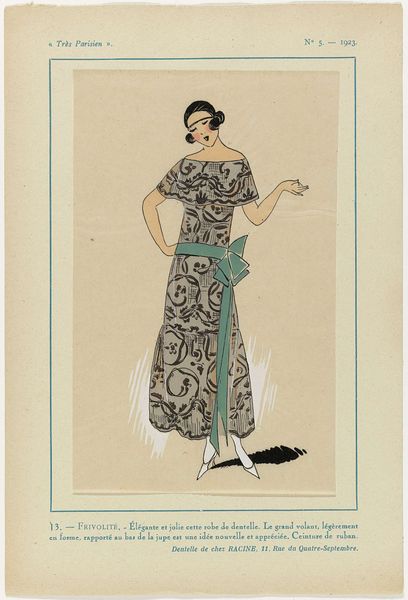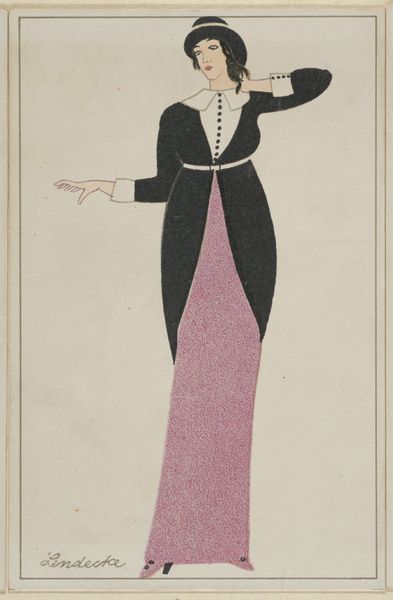
drawing, watercolor
#
art-deco
#
drawing
#
blue ink drawing
#
figuration
#
watercolor
#
flat colour
#
historical fashion
#
watercolour illustration
#
dress
Dimensions: height 269 mm, width 180 mm
Copyright: Rijks Museum: Open Domain
This pochoir print, ‘Très Parisien, 1923, No 10’, was made anonymously using a stencil-based technique. Pochoir is fascinating because it sits between mechanical reproduction and handcraft. Each color is applied individually, through a separate stencil. If you look closely, you’ll see the subtle layering and soft edges that define the image. The rich velvety texture of the dress is implied through the careful application of color, while delicate embroidery is suggested by the hand-painted details on the belt. Even the fur trim is evoked through the layering of blacks, browns, and whites. Consider the social context of this image: in the early 1920s, women's fashion was undergoing a dramatic transformation. Styles became more streamlined and liberating. Pochoir prints like this one played a crucial role in disseminating these trends, offering a glimpse into a world of luxury and aspiration. The labor and skill involved in creating these prints, although less visible than in a unique painting, was nonetheless considerable. Ultimately, the value of this artwork lies in understanding the complex relationship between hand and machine, artistic expression, and commercial production.
Comments
No comments
Be the first to comment and join the conversation on the ultimate creative platform.
